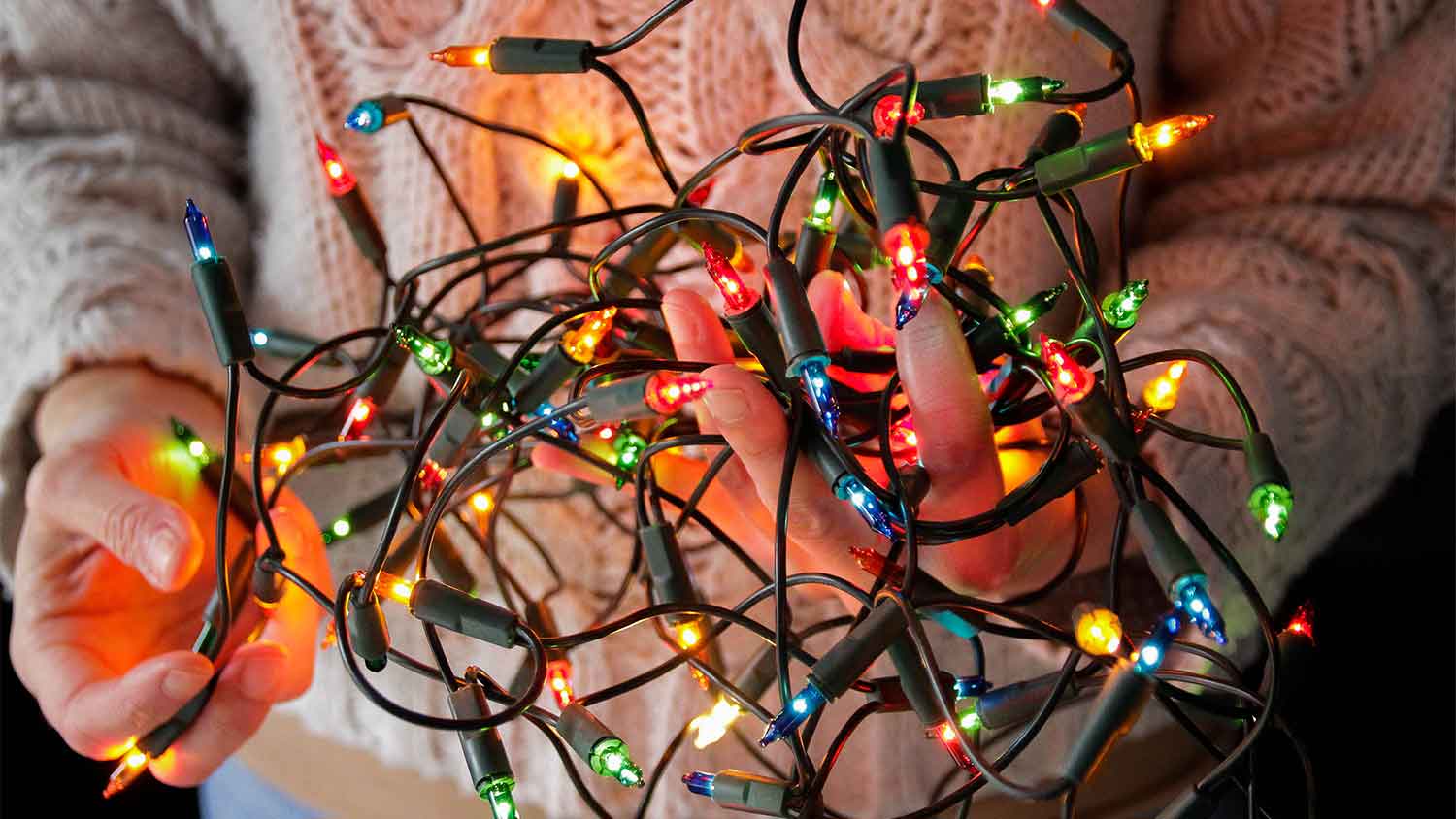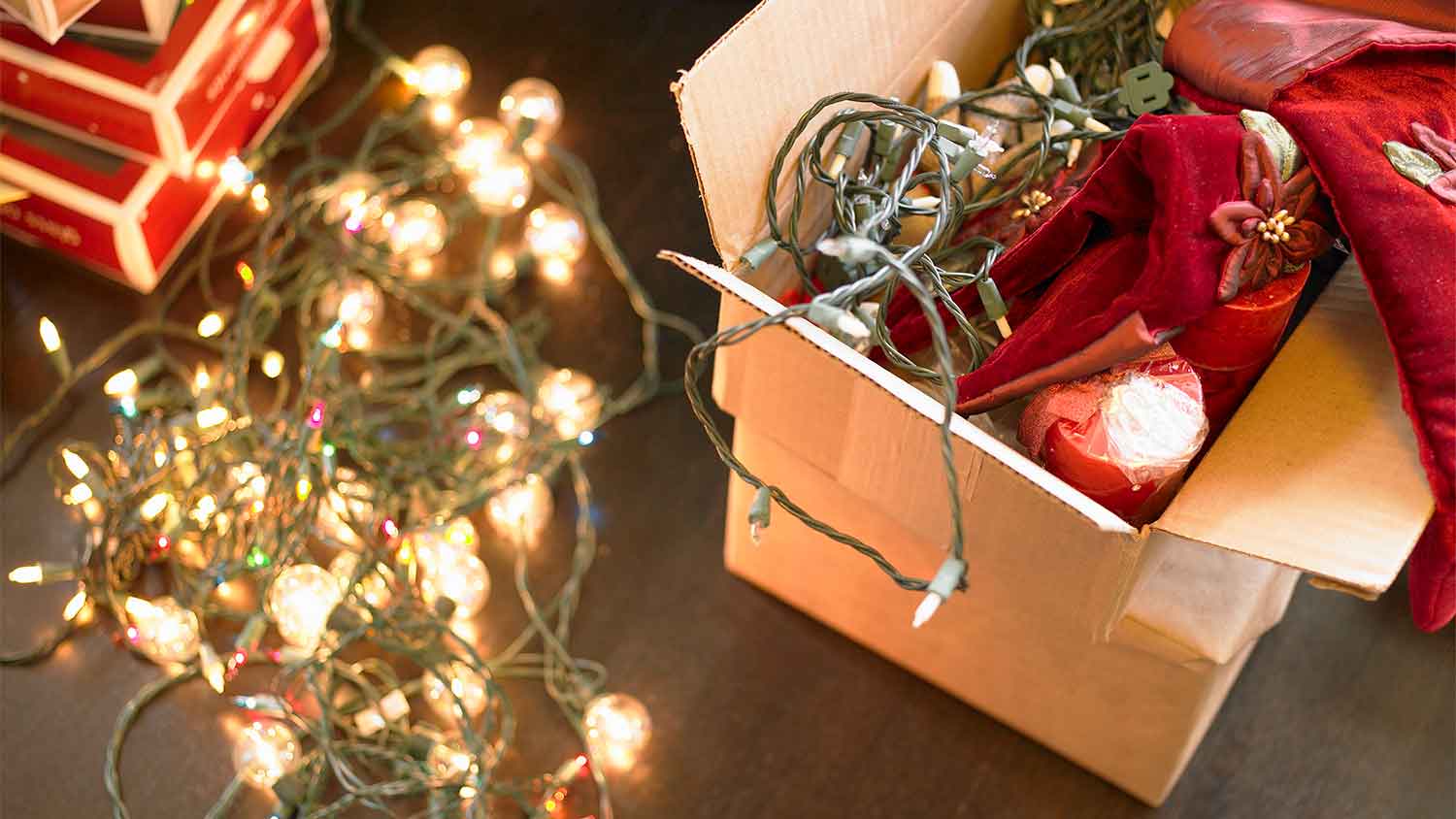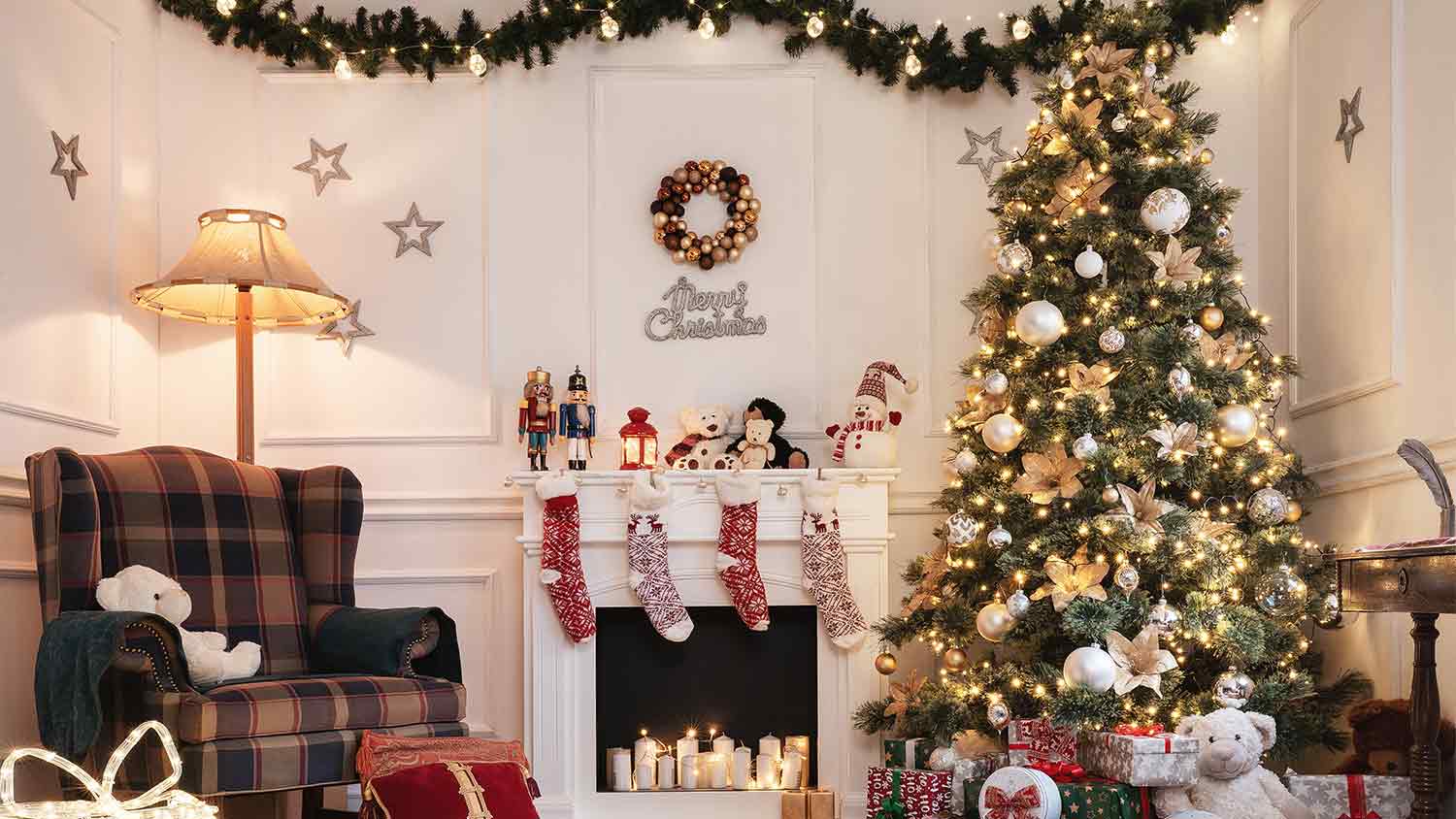
If you're dreaming of rocking around your—professionally decorated—tree this season, this is how much a Christmas tree decorating service will cost you.
Give your Christmas tree a holiday glow with one of these easy methods


Hanging lights on a tree ranks high on the list of must-do activities during the holiday season. But have you ever wondered if you’re doing it right and whether there’s an easier way that doesn’t involve straddling a seven-foot-tall pine? That’s why it’s important to learn how to put lights on a Christmas tree like a pro.
If your usual light-hanging method isn’t cutting it, consider branching out to find a better fit for your spruce. Whether you prefer to work from top to bottom or bottom to top, this guide will show you all the best ways to put lights on a Christmas tree.

Half the work of hanging lights on a Christmas tree is finding the best holiday lights. For starters, stick with one style. Although you may feel tempted to combine multiple types of string lights, doing so is more likely to look messy than curated. Featuring one style of lights will create a well-lit backdrop that allows your ornaments to shine without overpowering them.
Don’t forget to pay attention to cord color. String lights with green cords are the most common and recommended because they better camouflage with trees, but clear, brown, and black cords also work well. Light size also plays a part in how your Christmas tree looks. Though it may seem counterintuitive, mini-lights add more overall brightness to a tree than larger lights.
Finally, consider bulb type before making your final purchase. LED and incandescent bulbs are the most common string light options. Some people prefer incandescent lights because they have a brighter, warmer light, but LED lights use less energy, are adaptable to different colors, and last longer. If the outlet or light switch for your Christmas tree is in a tough-to-reach spot, you should consider investing in smart string lights, which allow you to control them from your smartphone.
Aside from the string lights, there’s nothing else you need to buy to hang them on a Christmas tree. A set of string lights with 50 bulbs can cost anywhere from $5 to $20, and the number of strands you’ll need depends on the size of your tree. If you maintain your lights between uses, this could be a one-time purchase every four to 10 years, helping you to save money on Christmas lights.

You’ll need to do a few things before stringing Christmas lights, no matter which method you choose.
There’s nothing worse than realizing you don’t have enough string lights to decorate your entire tree after you’ve done most of the work. That’s why you should calculate how many Christmas lights you need before starting the hanging process. We recommend purchasing more strands than you think you need in case of faulty bulbs or unaccounted-for measurements.
If your lights are brand-new, odds are you won’t need to untangle them. But if you’re using lights from years past, take a moment to ensure everything is in order.
Then, plug all of your lights in and ensure every bulb works. If one or a whole string isn’t, and you recently bought it, take it back to the store with a receipt to get another at no cost. If you’re using old lights and the receipt is long gone, look for spare bulbs that you can attach. With a few tricks, it’s pretty easy to fix Christmas lights yourself. And if that doesn’t work out, you may be better off buying new ones.
It’s important to ensure that the power source you’re using to light up your tree is safe because Christmas trees pose a fire hazard, especially as they dry out. When in doubt, use a ground fault circuit interrupter (GFCI) to add an extra layer of security to your set-up.

You have a few options for hanging lights on a Christmas tree. Here are all of the best ways to make your dazzling tree stand out.
Although you may be most familiar with wrapping string lights around a Christmas tree horizontally, hanging them vertically is worth considering.
Wrap the top of the cord gently around a branch at the top of the tree and let the cord hang down. Repeat with the remaining strands until the tree is completely covered.
Attach the cords at the top and tuck the receptors behind the branches where they’re not visible or use a decorative tree topper to hide them.
Working one at a time, wrap the string lights around each branch. Continue moving downward until all the branches under the string light are complete.
Repeat with each string light until every strand is firmly secured to the tree.
This hanging method is the most popular, but that doesn’t mean that you’re necessarily doing it right. Follow these steps to ensure you’re not missing a crucial step.
Plug the light into the wall and wrap the excess cord around the tree trunk until you reach the first bulb. This step will keep extra wiring out of sight and out of mind.
Pull the light up toward the bottom layer of branches.
Wrap the light around the first branch you reach, then move it along the layer horizontally to cover every branch before moving on to the next layer.
Wrap the cord around every few branches to prevent string lights from falling out of place over time.
Once the entire bottom layer is complete, pull the light up to the next layer and repeat the process until the whole tree is covered. Wait until you’re out of bulbs before connecting another set of string lights to your tree.
When the whole tree is covered, tuck the remaining cord connector into the branches at the top of the tree or in the back where it won’t easily be visible.
If you love the idea of hanging from the top down but aren’t sure about the vertical method, this classic light-hanging technique has you covered.
Wrap the cord around the tip of the tree to stabilize it and tuck the cord connector into the branches.
Pull the cord downward at a slight angle until it reaches a point.
Wrap the cord around the nearest branch and then pull the cord to the opposite direction at another angle. Attach another string light if necessary and repeat until the whole tree is covered.
Pull the excess cord under the tree’s base and wrap it around the trunk. Then, plug your tree in and let it shine.
If you’d rather not climb your ladder right away, try hanging lights on your Christmas tree from bottom to top instead.
Begin by wrapping excess cord around the trunk. Continue until you’re several inches away from the first bulb, then pull the cord upward until it reaches the bottom layer of branches.
Pull the cord into a V-shape and drape it over the branch at the center.
Tie the cord around the branch to secure, then fill in the empty space by draping the cord in a zigzag motion.
Make another V shape and fill it in as well. Continue this step until you fill the whole tree.
Tuck the cord connectors into the branches. The closer you place them next to the trunk, the harder they will be to see.

Along with these easy light-hanging methods, these extra tricks can lessen your workload.
If any bulbs break during the hanging process (it happens!), you’ll be grateful to have spares on hand. Plus, keeping a stock of extra bulbs means you won’t have to run back to the store for an exchange if a few bulbs aren’t working.
Using more than 20 strands of string lights will likely overload your circuit, burst some bulbs, and even turn your Christmas tree into a potential fire hazard. Don’t be like Clark Griswold—show your Christmas tree some love by strategically hanging fewer light strands.
If you’re struggling to disguise your extension cords, don’t be afraid to use electrical tape or light clips to conceal them. Doing so will make them easier to conceal, whether with presents or a home-stitched Christmas tree mat.
Putting festive lights on your Christmas tree is a task you can typically tackle on your own. However, it’s important to consider the safety risks of climbing a tall ladder, even if you follow ladder safety guidelines. On the flipside, hiring a pro to hang Christmas lights on your house is worth the investment. Plus, a local Christmas light installer can complete your interior and exterior light-hanging during one visit. Not having to climb up on the roof? Consider it a gift to yourself.
From average costs to expert advice, get all the answers you need to get your job done.

If you're dreaming of rocking around your—professionally decorated—tree this season, this is how much a Christmas tree decorating service will cost you.

How much does a Christmas decorating service cost? Turn your home into a winter wonderland this year—here are holiday decorating service prices.

Learn how to hang Christmas lights on your ceiling like a pro. This guide helps you buy the right supplies, plan your design, and enjoy the light show.

You don’t have to leave lasting damage after decorating for the holidays. Find out how to hang Christmas lights outside without nails.

Learn how to hang Christmas lights on gutters with or without your home's gutter guards in place and with or without a ladder. Follow our guide to learn more.

Looking to outsource your holiday decorating this year? Learn all about hiring a handyperson to hang Christmas lights.